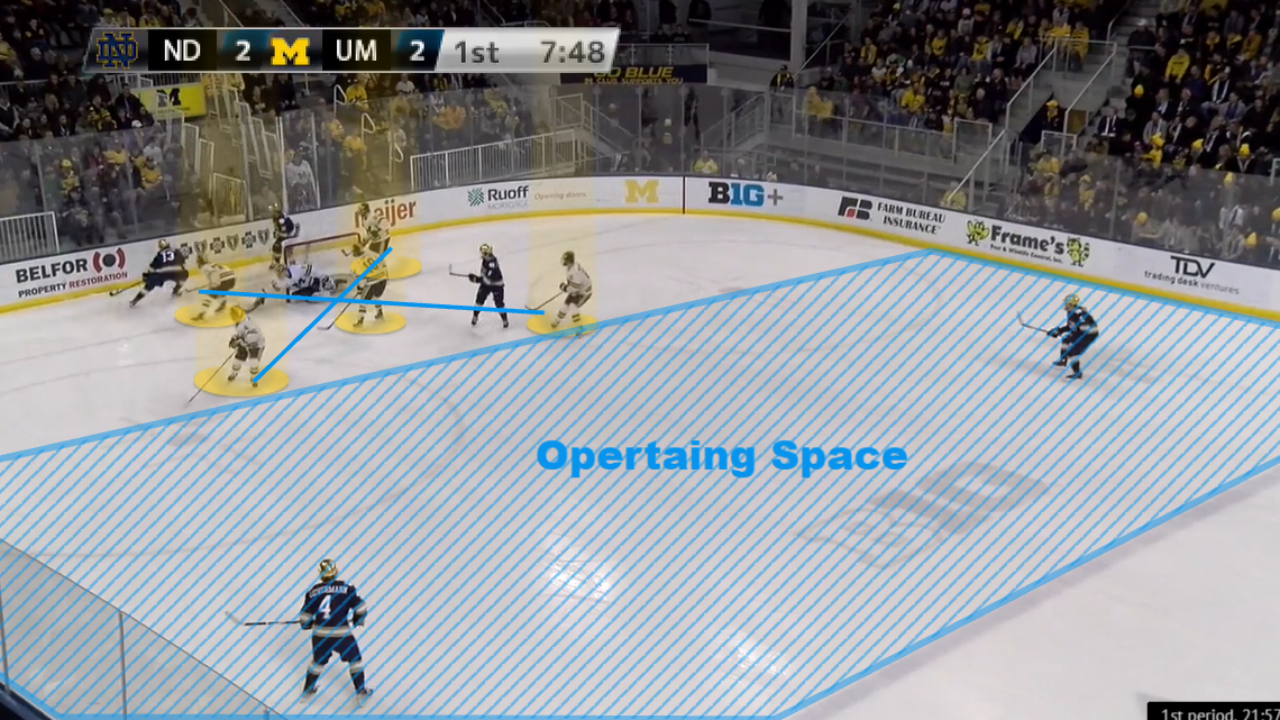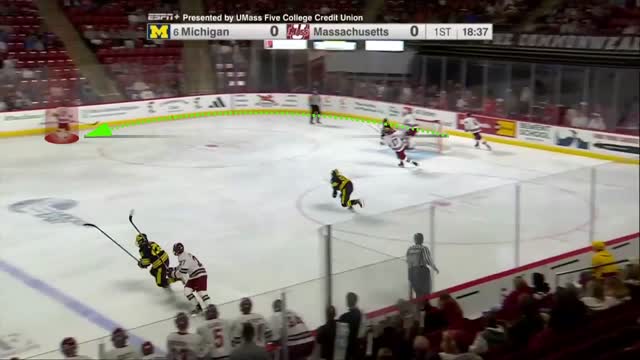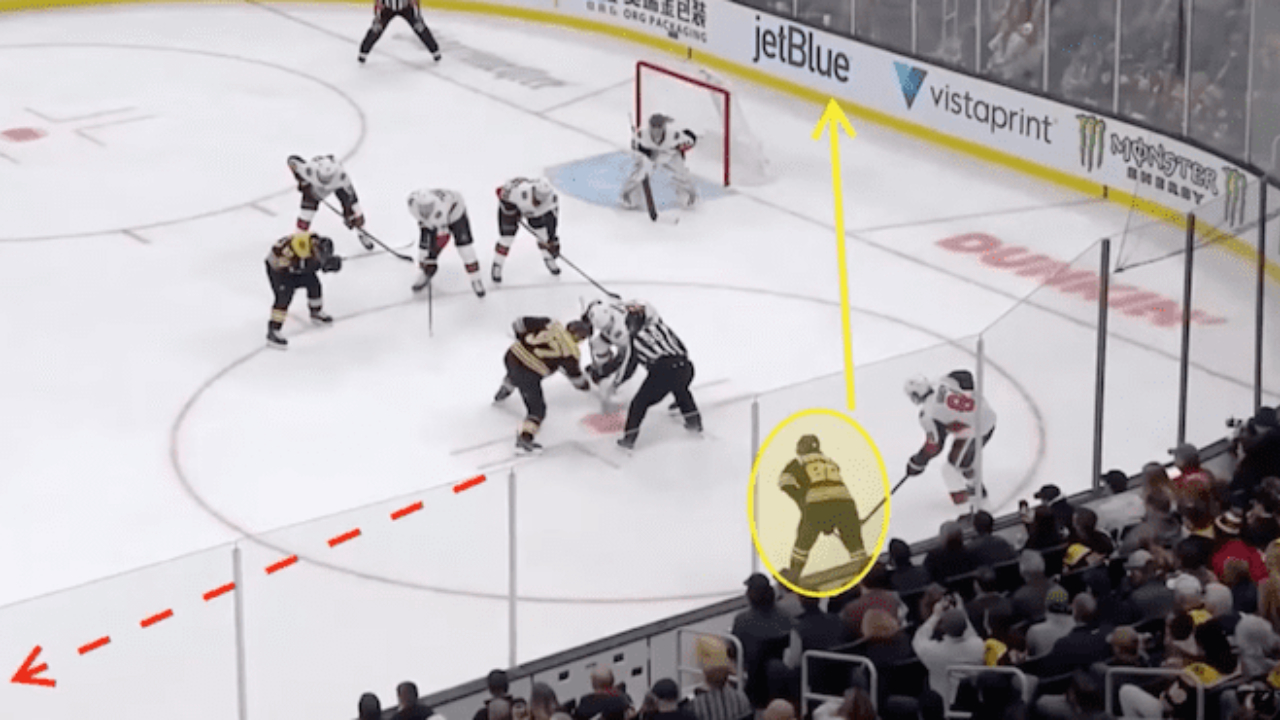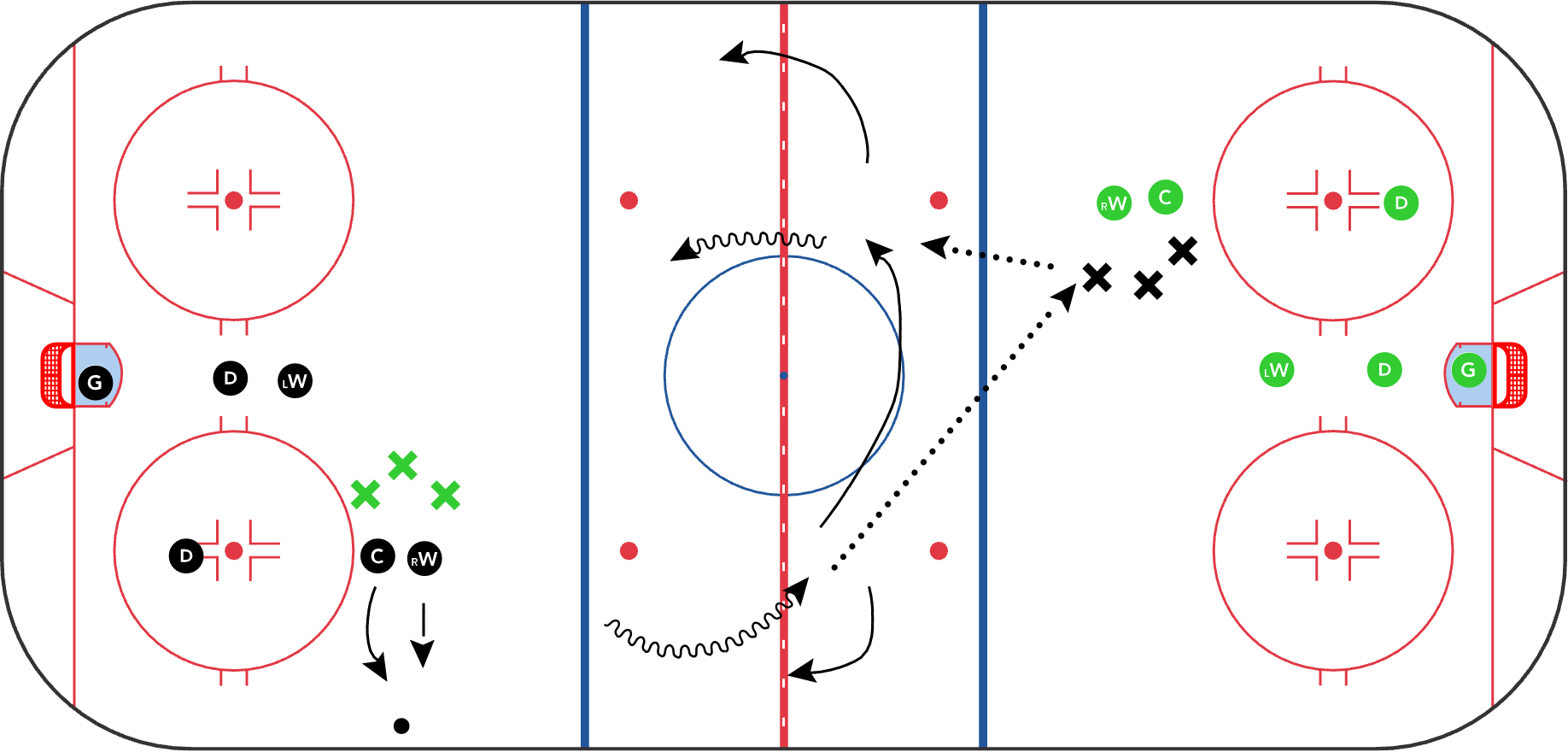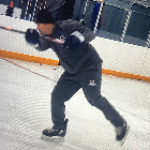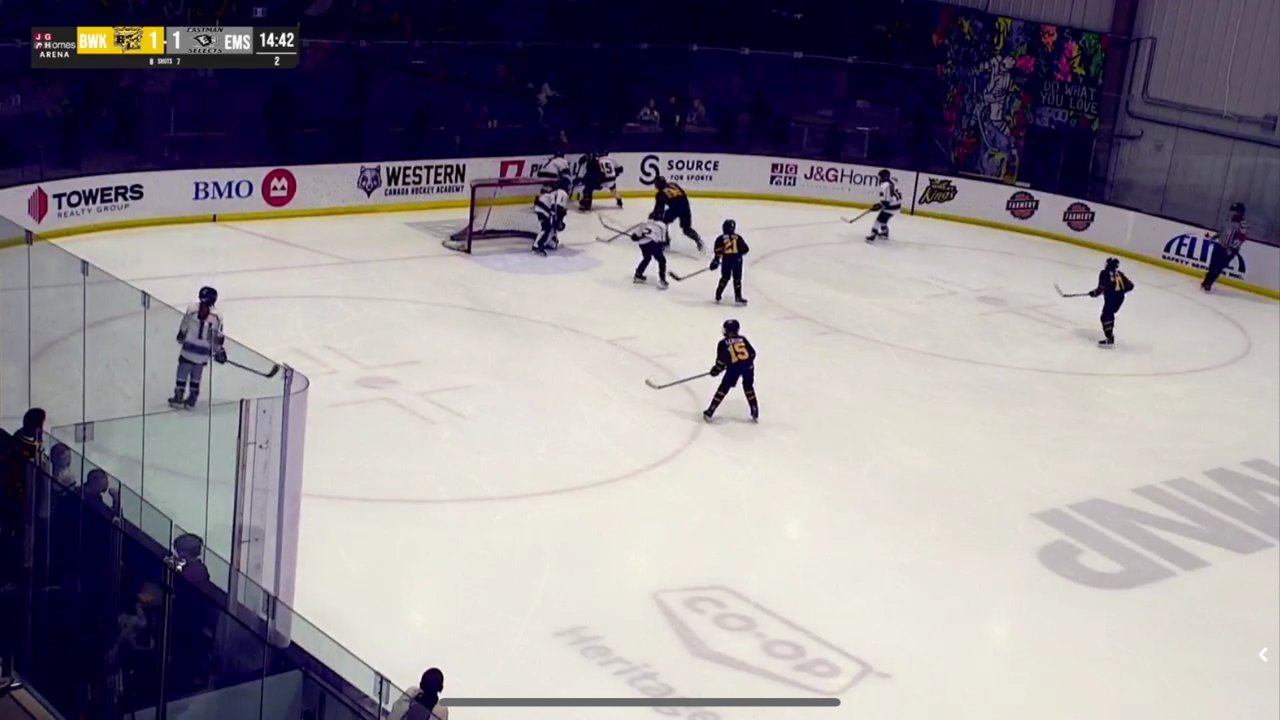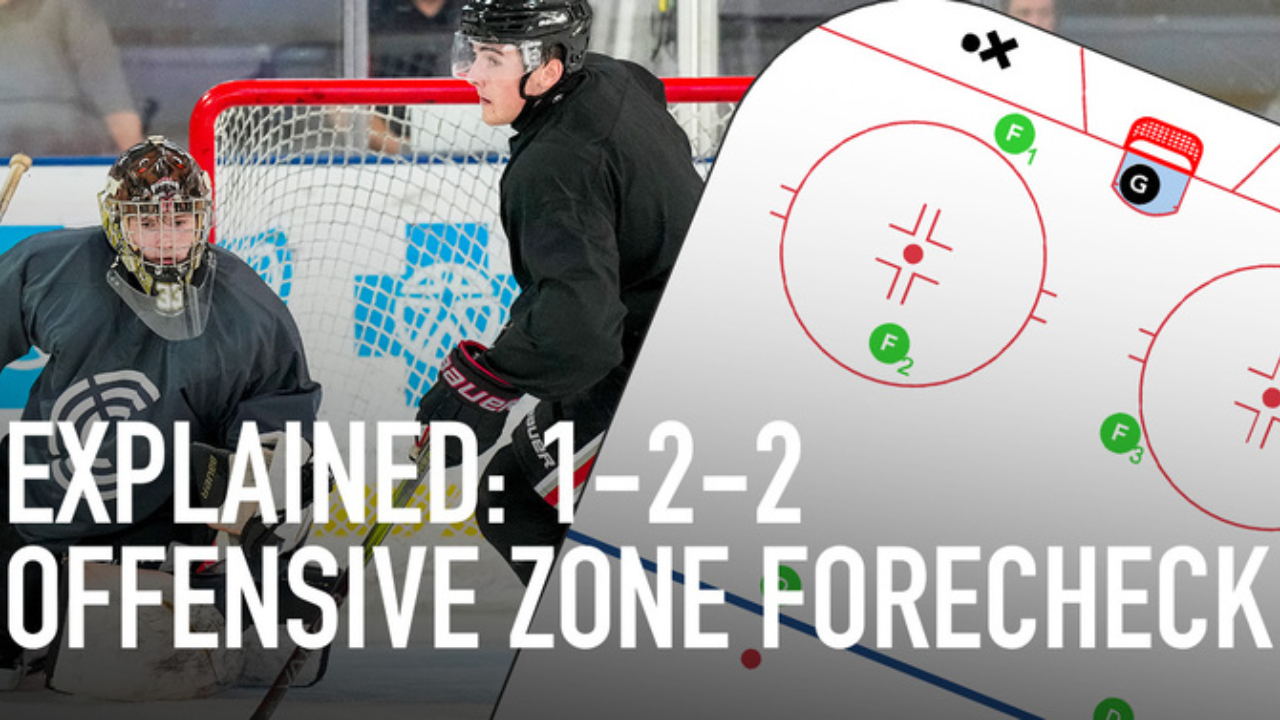Imagine this scenario: your strong side winger has his back to the oncoming pressure on the half-wall during a breakout, this is what I call a yellow pressure situation. A slasher is when the weakside winger cuts across the royal road, attacking through the opposing strong-side defensemen. This movement forces the strong-side defencemen to retreat, creating time and space for the strong-side winger. But when done wrong, the slasher will find him or herself way above the play, not being a viable option for any of their teammates. But rather find themselves high in the neutral zone, waiting for the rush to catch up which creates inverted rushes and neglecting their responsibilities in the Dzone.
While watching several WHL games, I've noticed how the wingers strive to increase the tempo by forcing the opposing team's defensemen to retreat and setting up long passes from their teammates. When executed properly, this strategy opens up the ice for the defensemen to make plays, facilitating the team's entry into the offensive zone during a rush. However, the wingers often failed to anticipate the pressure on their teammates and did not work hard enough to find passing lanes to support their defensemen. This frequently left their teammates vulnerable, resulting in turnovers in the defensive zone.
The PWHL clip demonstrates how the weak-side winger reads the play of the strong-side winger. Depending on her partner's positioning, she chooses her route accordingly. Ultimately, she forces the opposing team's strong-side defenseman to retreat, helping her team gain the offensive Ozone for an attack.



